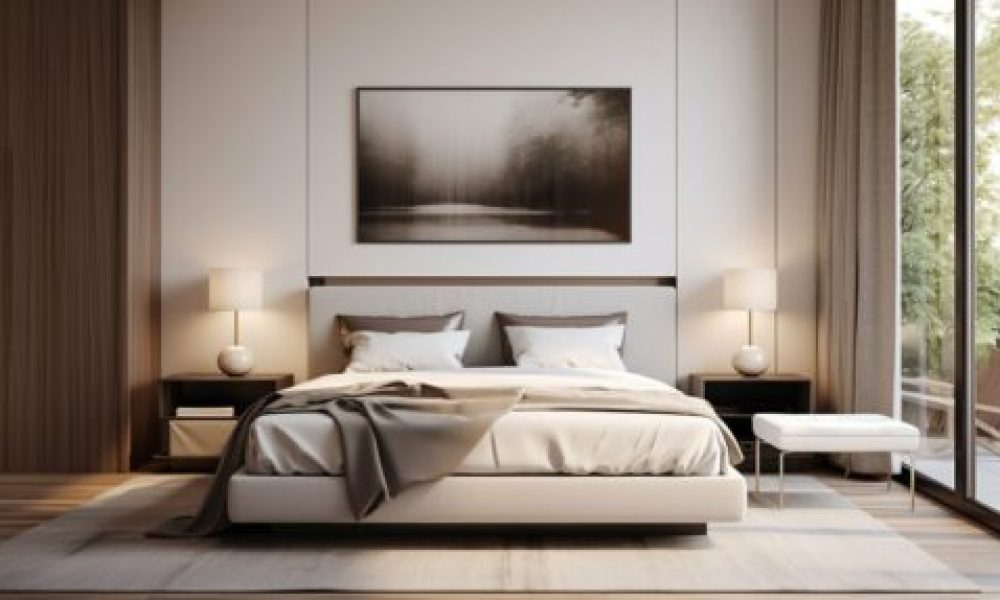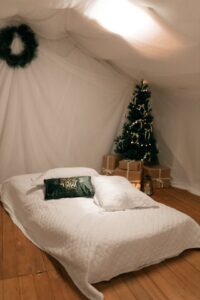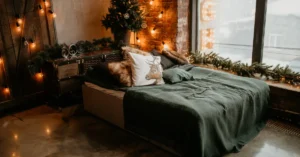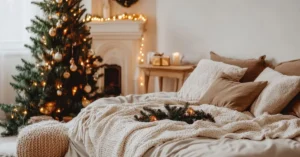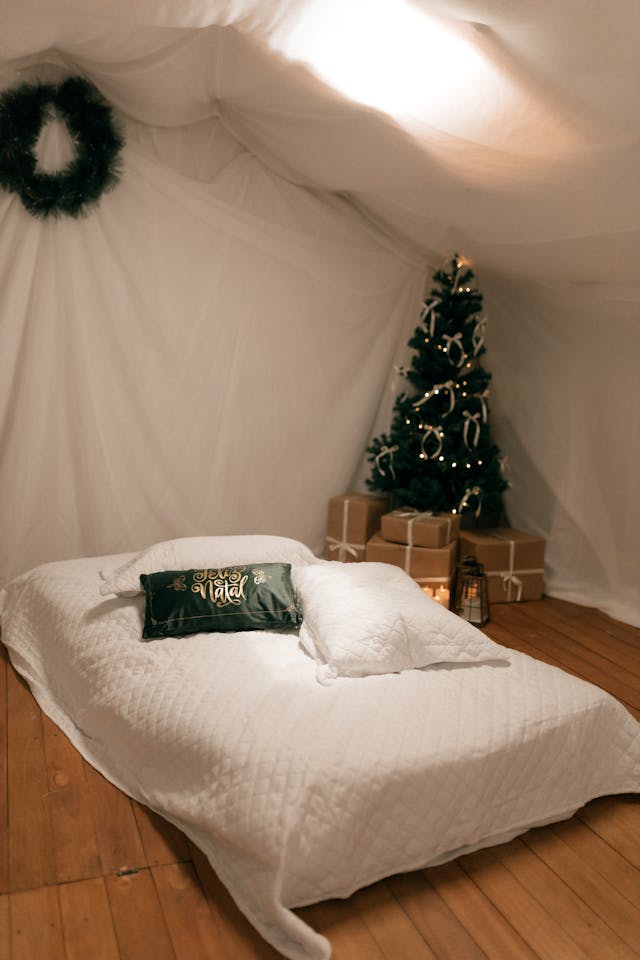Best Bedside Table Lamps: A Complete Guide to Height, Style, and Buying Tips
The right bedside table lamps make your bedroom feel calmer, cozier, and more functional. This guide shows you exactly how to pick the perfect height, shade, materials, and bulbs—plus smart features and eco-forward options—so your bedside table lamps look great and work beautifully from day one.
Key Takeaways: bedside table lamps
- Height matters: Aim for a total lamp height that sits near eye level when you’re seated in bed.
- Right scale: Choose a lamp base and shade that match your nightstand width for balance.
- Shade + bulb = vibe: Shade shape and bulb type control glare, softness, and reading comfort.
- Function first: Dimmers, USB ports, and adjustable heads make bedside table lamps more useful.
- Style harmony: Coordinate materials and finishes with your bedding and furniture for a cohesive look.
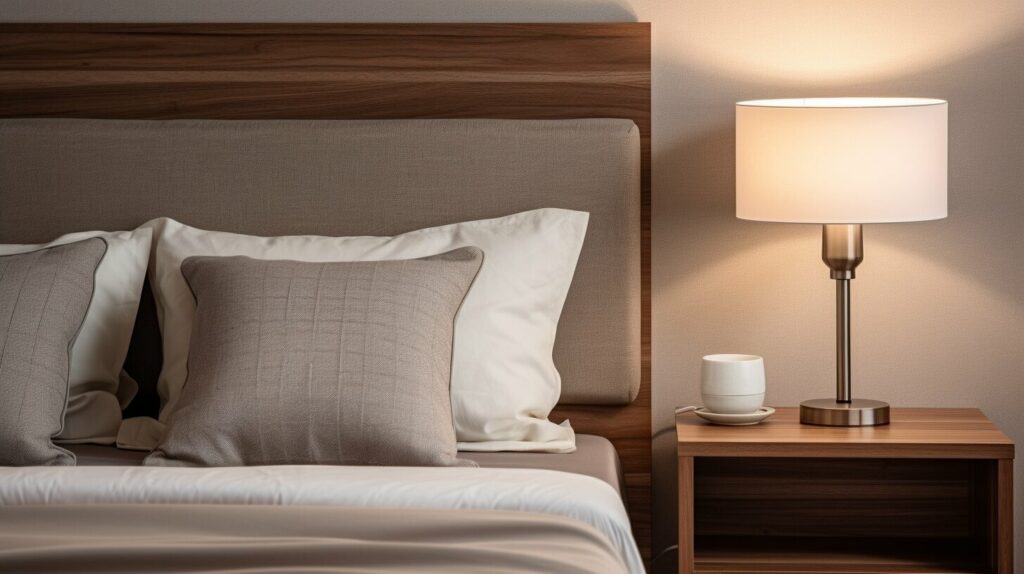
How tall should bedside table lamps be?
Answer first: Most people find comfort when the bottom of the shade is close to eye level while sitting up in bed. That usually puts total height for bedside table lamps around 24–28 inches, depending on your mattress and nightstand.
Use this quick check: sit up in bed with your pillow arrangement; your eyes should be just below the lampshade rim. If your nightstand is tall (say, 26–28 inches), err toward a shorter lamp. If your nightstand is low (20–24 inches), choose a taller lamp to raise light where you need it.
For deeper sizing examples and diagrams, see Choosing the Right Bedside Table Lamps from Cozy Bed Quarters.
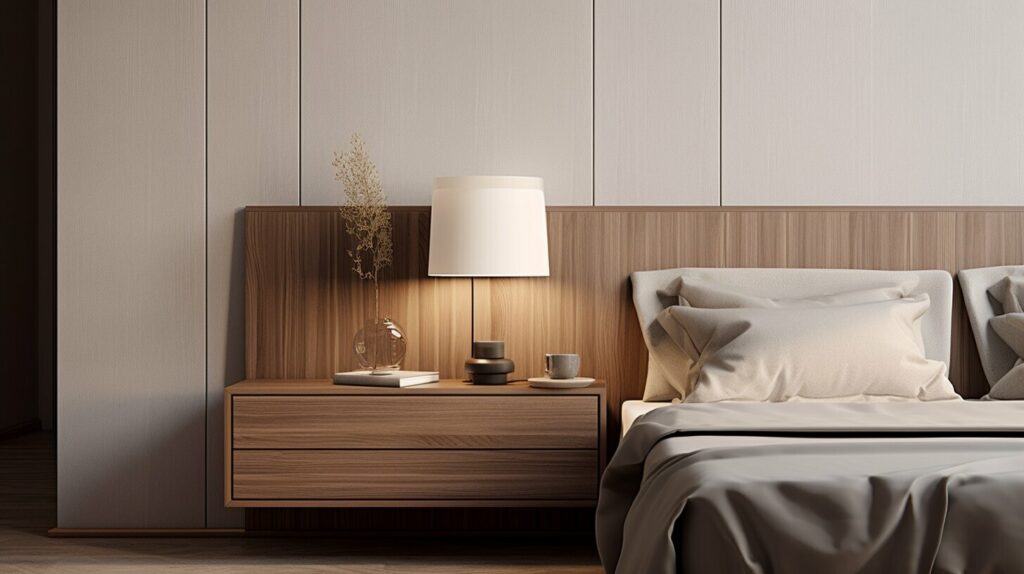
What width and scale should I pick?
Answer first: Keep proportions in check—aim for a lamp base that’s roughly one-third the width of your nightstand, and a shade that doesn’t exceed the tabletop.
A visually balanced setup prevents wobble, leaves space for a glass of water or book, and looks polished. On a slender nightstand, slimmer silhouettes and drum shades maintain balance; on a wider nightstand, larger bases and empire shades can anchor the scene. Explore more scale tips in Bedroom Side Table Lamp Ideas.
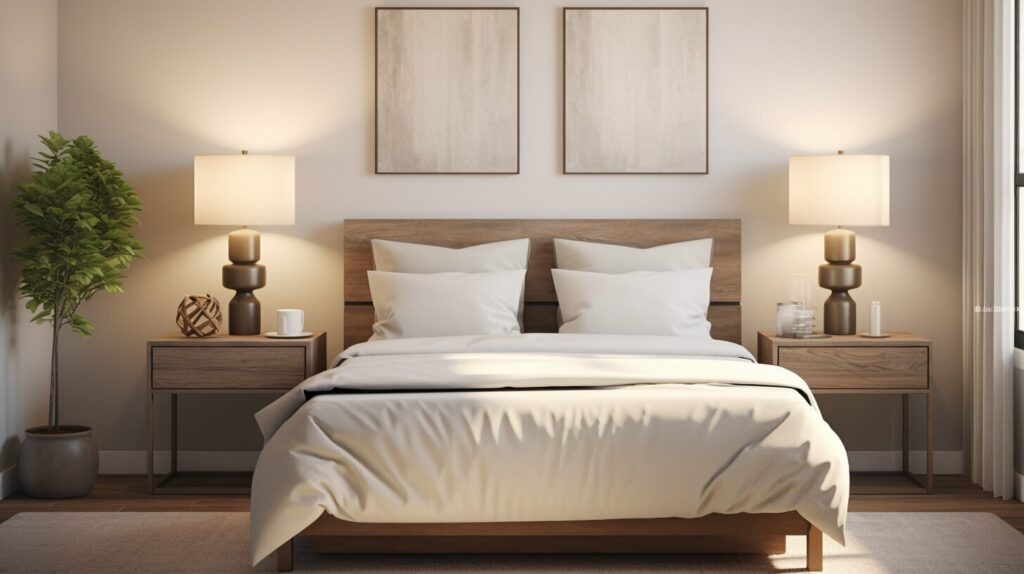
Which lampshade shape and material work best?
Answer first: Shade shape controls light spread; shade material controls glow. Drum shades spread light evenly, while empire shades push more light down for reading.
Linen and cotton diffuse gently, preventing hotspots; paper shades look airy but may show bulb hotspots; opaque or metal shades give strong, directional light that’s great for focused tasks. Ensure your harp height and finial allow the shade to sit low enough to block bare-bulb glare—especially vital for bedside table lamps you’ll use for reading.
How should I choose bulbs for bedside reading and relaxation?
Answer first: Pick warm-white LED bulbs around 2700K–3000K for wind-down hours; higher Kelvins feel cooler and more energizing.
LEDs are efficient, quiet, and long-lasting—ideal for bedside table lamps. Look for a Color Rendering Index (CRI) of 90+ so colors in your bedding and furniture look true. For brightness, many bedrooms feel right between 450–800 lumens per lamp; scale up or down based on shade opacity and your eyesight. For a deeper primer on light color and sleep, the Sleep Foundation discusses how evening light affects rest in their resources on bedroom light and sleep (Sleep Foundation), and Better Homes & Gardens offers a clear overview of bulb color temperatures (BHG Bulb Guide).

What features make bedside lamps more convenient?
Answer first: Dimmers, 3-way switching, touch controls, and USB/USB-C ports make bedside table lamps easier to live with—especially if outlets are limited.
Adjustable heads and swing arms let you aim light on pages without flooding your partner’s side. If you use smart plugs or smart bulbs, confirm that the lamp’s switch style plays nicely with your smart home routines. Consider a low-profile tray base for rings and earbuds to declutter your surface.
How do I coordinate lamp style with the rest of the room?
Answer first: Echo a finish or texture already present—wood, ceramic, brass, matte black—to pull the look together.
For warm modern rooms, try slender profiles, drum shades, and quiet neutrals. For traditional spaces, look to turned wood, ceramic gourd shapes, and pleated shades. To unify the room, pair your bedside table lamps with other light sources, like a ceiling fixture or floor lamp—see our guide to combining layers in Bedroom Lighting 101: From Ambient to Task and Integrating Floor Lamps and Ceiling Fixtures.

Which lamp materials are durable—and eco-friendly?
Answer first: Ceramic, metal, and solid wood are durable mainstays; recycled glass, FSC-certified wood, and natural-fiber shades add a sustainable edge.
If you prioritize low-impact choices, look for recycled metals, natural linen or jute shades, and durable finishes that age gracefully. When your lighting plan supports calmer sleep routines, your bedding choices matter too—pair the warm glow of bedside table lamps with breathable textiles like organic bedding, sustainable bedding, or eco-conscious sheets to keep your sleep environment comfortable and planet-friendly.
How much light output do I need?
Answer first: Reading comfort typically starts around 450 lumens per lamp, then adjust for shade opacity and distance.
Opaque shades, dark fabrics, and extra-wide nightstands may need more output. If you prefer ultra-soft ambience, keep lumens lower but add a separate task light on the headboard or wall. Parachute Home’s bedroom lighting ideas provide stylistic inspiration while you dial in the right glow (Parachute: Bedroom Lighting Ideas).
How do I ensure base stability and safety?
Answer first: Choose a sturdy, weighted base and keep cords tidy; this prevents tipping and snags.
Heavier bases matter if you have pets or kids. Felt pads protect sensitive nightstands; inline cord switches are convenient when a lamp sits far back. For bedside table lamps with tall, narrow profiles, look for a wider base plate or squared footprint to lower the center of gravity.
Smart extras that make a big difference
Answer first: Small conveniences add up—integrated nightlights, tray bases, and pull chains you can find by feel.
USB ports help charge devices without bulky bricks. If you share a room, two independently dimmable bedside table lamps preserve harmony. A smart bulb routine can warm color temperature near bedtime to encourage relaxation.
Budgeting for quality and longevity
Answer first: Set a budget, then prioritize materials and features you’ll feel every night—shade quality, dimming, and stable construction.
A midrange ceramic or metal lamp with a linen shade often outlasts trendier finishes. If you can, invest slightly more in shades and LED bulbs—they determine most of the day-to-day experience of your bedside table lamps. For more ideas, browse our curated Lamps & Lighting hub.
Eco-Friendly vs. Conventional: What to Know
Answer first: Eco-forward picks focus on sustainable materials and low-energy bulbs; conventional options can be budget-friendly but may rely on finishes or plastics that age faster.
Materials: FSC-certified wood, recycled glass, and powder-coated metals have a lighter footprint than some resin blends. Natural fiber shades (linen, cotton) are durable and recyclable in some regions.
Bulbs: Choose ENERGY STAR–rated LEDs for your bedside table lamps to reduce energy and heat. Warm-white 2700K LEDs are calming for pre-sleep routines.
End of life: Prefer replaceable-bulb designs over sealed, integrated LED heads to extend product life.
Buyer’s Guide: Shade, Switches, and Certification Basics
Answer first: A few spec checks make buying easy—shade fit, switch type, and safety marks determine comfort and reliability.
- Shade fit: The shade should hide the bulb from a seated eye level. Verify harp size, spider fitter, and finial height.
- Switching: Rocker, rotary, pull chain, or touch—pick what you’ll use half-asleep. For precise control, pair dimmable LEDs with dimmer-compatible sockets.
- Safety: Look for UL/ETL listings, sturdy sockets, and quality cord strain relief.
- Glare control: Add a diffuser if you see the filament or LED dots when reclined.
- Maintenance: Choose washable linen shades or dust-resistant finishes for bedside table lamps in high-use rooms.
Bedroom Lighting Layers: Make Your Lamps Work Harder
Answer first: Three layers—ambient, task, and accent—create the most comfortable rooms. Your bedside table lamps are the task layer that supports reading and wind-down routines.
Ambient light might come from a pendant or flush mount; accent light highlights art or textures. When all three layers are dimmable, the room shifts from bright and practical to soft and sleepy. Learn the full framework in Bedroom Lighting 101 and explore mood-setting ideas in Bedroom Lighting Mood Tips.

FAQs
- What is the ideal height for a bedside table lamp?
- Most people prefer bedside table lamps around 24–28 inches tall so the bottom of the shade sits near eye level when you’re seated in bed.
- How do I choose a lampshade that complements my base and decor?
- Match the silhouette to your style (drum for modern, empire for classic) and use linen or cotton for soft diffusion. Ensure the shade sits low enough to hide the bulb from view.
- Which bulbs are best for winding down at night?
- Warm-white LEDs (about 2700K) are relaxing in bedside table lamps. Look for dimmable bulbs and a CRI of 90+ so colors look natural.
- Are there bedside lamps with extra features?
- Yes—dimmers, touch controls, USB ports, adjustable arms, and smart-bulb compatibility make bedside table lamps more comfortable to use daily.
Final Thoughts
When you get height, shade, and bulb choice right, bedside table lamps become the quiet stars of your bedroom. Use the guidance above to build a layered, dimmable setup that feels calm at night and functional by day. For more lighting ideas, browse the Cozy Bed Quarters Lamps & Lighting hub.
Related Reading
From Cozy Bed Quarters
- Choosing the Right Bedside Table Lamps
- Bedroom Lighting 101: From Ambient to Task
- Bedroom Lighting Mood Tips
Trusted External Resources

